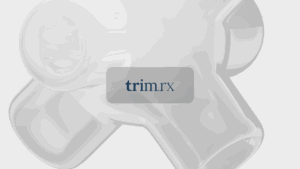Why Is My Ozempic Pen Not Working? Troubleshooting Common Issues

Understanding how to use your Ozempic pen effectively is essential for managing your health, especially for those with type 2 diabetes. However, it’s not uncommon to encounter issues with the pen that can lead to frustration and uncertainty. If you’ve found yourself asking, “Why is my Ozempic pen not working?”, you’re not alone. In this blog post, we’ll explore the common reasons why your Ozempic pen might be malfunctioning, provide troubleshooting steps, and share tips on how to ensure your treatment goes smoothly.
Introduction
Did you know that approximately 34 million Americans have diabetes, and many of them rely on effective medication to manage their blood sugar levels? For those of us using Ozempic (semaglutide), a commonly prescribed medication, the convenience of the pen makes daily management easier. However, when the pen fails to work, it can create significant concern.
In this post, we aim to demystify the common problems associated with the Ozempic pen and provide practical solutions to help you troubleshoot effectively. By the end of this article, you’ll gain a clearer understanding of why your Ozempic pen may not be functioning correctly and what steps you can take to resolve these issues.
We will cover:
- Common reasons an Ozempic pen may not work
- Step-by-step troubleshooting guidelines
- How to identify whether your pen is functioning correctly
- Important safety tips for using your Ozempic pen
Together, we’ll ensure you can continue your journey toward better health with confidence.
Common Reasons Why Your Ozempic Pen May Not Work
Understanding the potential issues with your Ozempic pen can help you address them more quickly. Here are some of the most common reasons why your pen might not be working:
1. The Pen Is Empty
One of the most straightforward reasons your Ozempic pen may not work is that it is empty. Each pen typically contains a limited number of doses, and knowing how many doses are left can help avoid unexpected interruptions in your treatment.
Tip: Check the dose counter on your pen. If it does not show any usable doses, it’s time to replace it with a new one.
2. Improper Needle Attachment
If the needle is not attached securely to the pen, it can lead to issues with injection. A loose or improperly attached needle can prevent the medication from being delivered effectively.
Tip: Always ensure that the needle is tightly secured and that you are using a new, sterile needle for each injection.
3. Blocked Needle
Sometimes, the needle may become clogged with medication, preventing the flow of Ozempic. This can happen if the pen is not stored correctly or if the same needle is reused multiple times.
Tip: Perform a flow check before each injection to ensure the needle is clear. If you do not see a drop of medication, replace the needle and try again.
4. Damaged Pen
Physical damage to the pen can also cause it to malfunction. Look for any visible signs of wear and tear, such as cracks or leaks, which might affect its performance.
Tip: If you notice any damage, do not attempt to use the pen. Dispose of it properly and get a replacement.
5. Incorrect Handling or Storage
Improper handling or storage can lead to issues with your Ozempic pen. For example, if the pen has been frozen or exposed to extreme temperatures, it may not work as intended.
Tip: Always store your Ozempic pen in a refrigerator (between 36°F to 46°F) until the first use, and then it can be kept at room temperature for up to 56 days after being used initially.
Step-by-Step Troubleshooting Guidelines
If your Ozempic pen is not working, follow these troubleshooting steps to identify and resolve the issue:
Step 1: Check the Dose Counter
Begin by looking at the dose counter to see how many doses remain. If the counter shows zero or near zero, replace the pen.
Step 2: Inspect the Needle
Ensure that the needle is correctly attached and not blocked. If it appears damaged or clogged, replace it with a new needle.
Step 3: Perform a Flow Check
Before using the pen, conduct a flow check. To do this, turn the dose selector to the flow check symbol, and press the dose button. A drop of Ozempic should appear at the needle tip. If not, replace the needle and try again.
Step 4: Examine the Pen for Damage
Inspect the pen for any signs of damage. If you find any cracks or leaks, do not attempt to use the pen and replace it immediately.
Step 5: Consult the Instructions
If you have followed the previous steps and the pen is still not functioning, refer to the manufacturer’s instructions. They provide specific troubleshooting information tailored to your pen model.
How to Know if Your Ozempic Pen Is Working
To confirm that your Ozempic pen is functioning correctly, you should:
- Listen for a clicking sound when pressing the dose button; this indicates that the pen is operating normally.
- Ensure that the dose counter returns to zero after you have completed the injection, confirming that the full dose has been delivered.
If you do not hear the clicking sound or the dose counter does not reflect the injection, it may indicate a malfunction.
Important Safety Tips for Using Your Ozempic Pen
Safety is paramount when using any medication, including the Ozempic pen. Here are some essential tips to keep in mind:
- Never Share Your Pen: Sharing your Ozempic pen can spread infections, even if the needle has been changed.
- Dispose of Needles Properly: Always use a sharps container for disposing of used needles and pens.
- Stay Within the Expiry Date: Ensure that your pen is still within its expiration date and has not been frozen.
- Consult Your Doctor: If you experience persistent issues with your pen, reach out to your healthcare provider for assistance.
Conclusion
Having a malfunctioning Ozempic pen can be concerning, but understanding the common issues and how to troubleshoot them can help you manage your treatment confidently. Remember to check the dose counter, inspect the needle, and perform regular flow checks to ensure your pen is working properly.
If problems persist, consult with your healthcare provider or contact Novo Nordisk for further assistance. By prioritizing your health and being proactive about your medication, you can continue on your path towards managing your diabetes effectively.
FAQ
What should I do if my Ozempic pen is not dispensing medication after performing the flow check?
If your pen is not dispensing medication after performing the flow check, try replacing the needle. If it still does not work, dispose of the pen and use a new one.
How do I store my Ozempic pen after the first use?
After the first use, you can store your Ozempic pen at room temperature (59°F to 86°F) or continue keeping it in the refrigerator. However, do not freeze it.
Can I use my Ozempic pen if it looks cloudy or contains particles?
If the medication in your pen appears cloudy or contains particles, do not use it. Dispose of the pen and get a new one.
How can I tell if my pen is damaged?
Inspect your pen for any visible cracks or leaks. If you notice any damage, do not use the pen and replace it immediately.
What should I do if I experience side effects from Ozempic?
If you experience any concerning side effects, such as nausea or low blood sugar, consult your healthcare provider for guidance on how to proceed.
By keeping these tips and troubleshooting steps in mind, you can effectively manage your Ozempic pen usage and ensure your health remains a top priority. If you are interested in personalized weight loss solutions, consider taking our free assessment quiz to see if you qualify for prescription weight loss medications. Together, we can help you achieve your health goals!

Transforming Lives, One Step at a Time
Keep reading
Navigating Ozempic Dosing: Can You Take 1.5 mg of Ozempic?
Can you take 1.5 mg of Ozempic? Discover Ozempic’s standard doses, why 1.5 mg isn’t available, and the risks of deviating from prescribed dosages. Learn about safe, medically supervised weight loss.
Ozempic and Dialysis: Navigating Treatment for Kidney Health
Can you take Ozempic on dialysis? Explore the evidence, benefits for weight loss & glycemic control, and safety considerations for kidney health patients.
Can You Take Too Much Ozempic? Navigating Safe Dosing for Weight Management
Can you take too much Ozempic? Learn the critical risks of Ozempic overdose, common dosing errors, and how to ensure safe, effective use for weight management.
Can I Take Prednisone and Ozempic? Navigating Medications for Safe Weight Loss and Health
Can I take Prednisone and Ozempic together? Learn about potential drug interactions, managing blood sugar, and ensuring safe treatment. Get expert insights for your health.
Flying High with Your Health: Everything You Need to Know About Can I Take Ozempic on a Plane?
Wondering if you can take Ozempic on a plane? Get essential tips on storage, TSA rules, packing, and dosing to travel confidently with your GLP-1 medication.
Your Weight Loss Journey: Why Consider Ozempic and Personalized Care
Explore why take Ozempic for weight loss, its role in diabetes management, and how GLP-1 agonists work. Discover personalized medical weight loss solutions.
Considering Ozempic Without Diabetes? What Healthy Individuals Need to Know About Weight Loss Medications
Considering Ozempic without diabetes for weight loss? Understand its FDA-approved purpose, risks of off-label use, and safer alternatives like Wegovy and Zepbound for chronic weight management. Make informed decisions for your health.
Navigating Your Health Journey: Can You Take Steroids and Ozempic Together?
Can you take steroids and Ozempic together? Explore the interactions between corticosteroids, anabolic steroids, and GLP-1 agonists for safe weight management.
Is Ozempic Being Taken Off the Market? Navigating Your Weight Loss Journey with Confidence
Is Ozempic being taken off the market? Get the facts on Ozempic, compounded GLP-1s, FDA regulations, and safe weight loss options. Learn more now!






